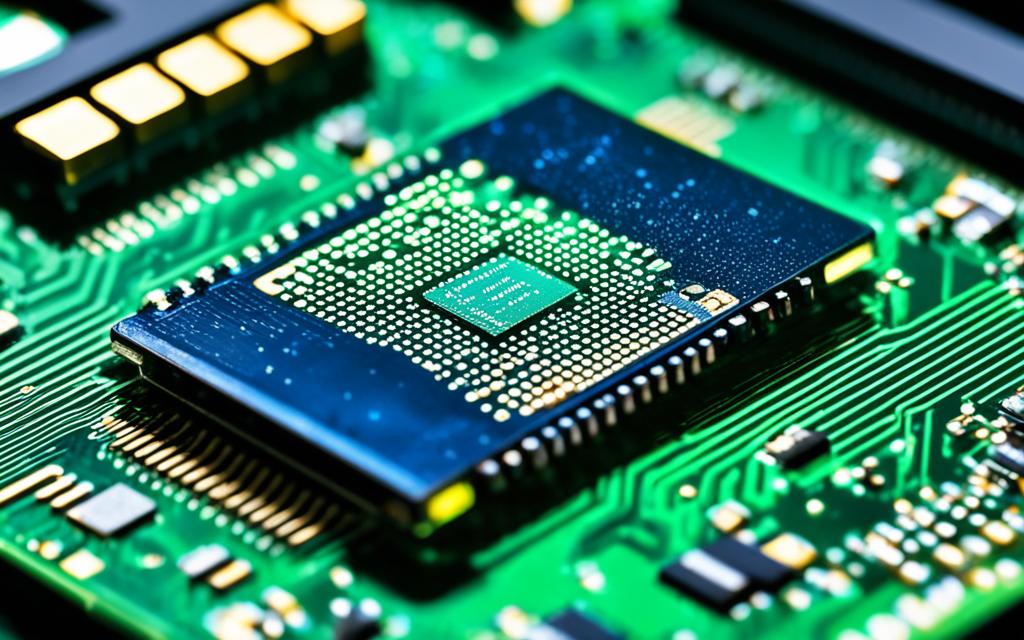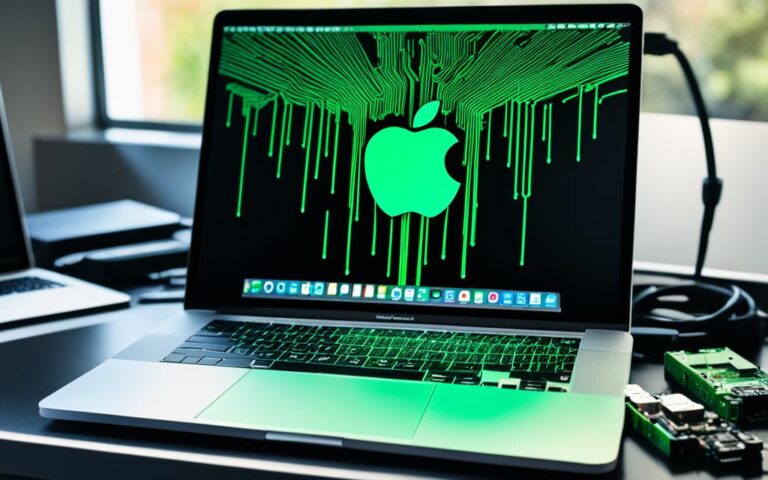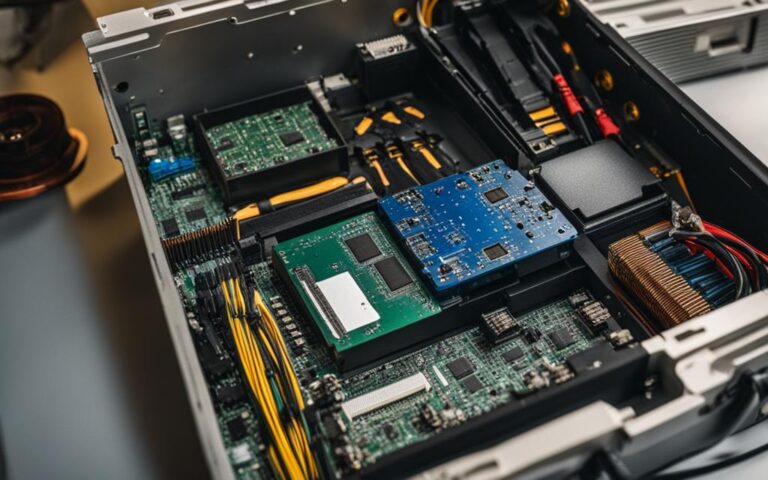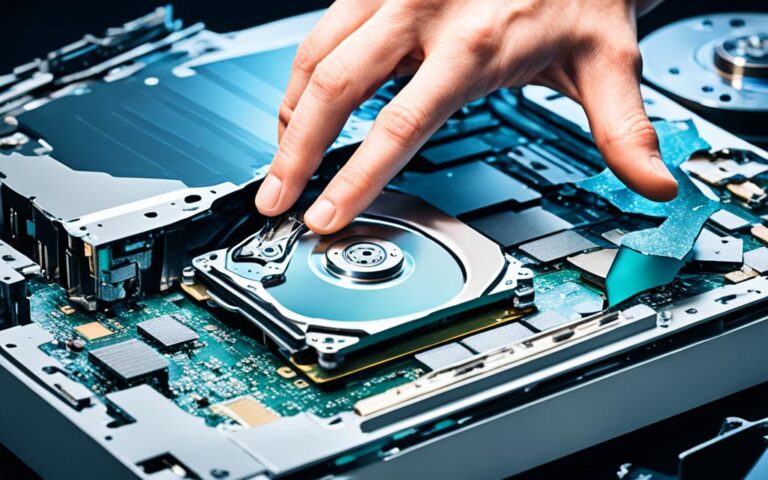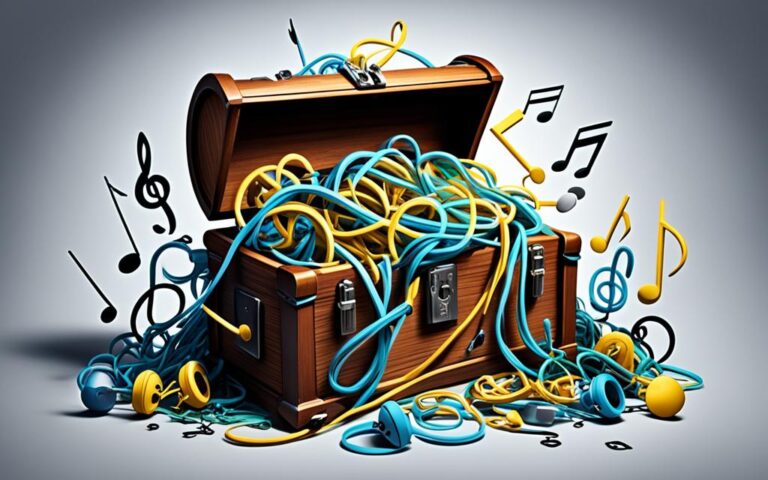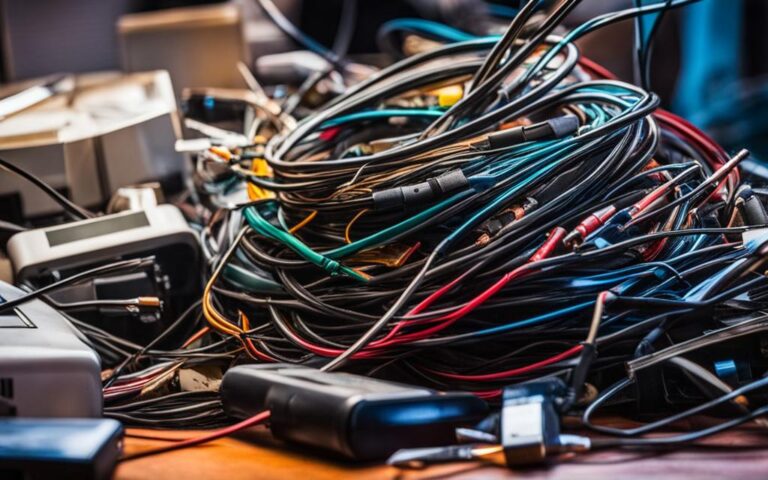How to Recover Data from Corrupted Memory Cards
If you’ve ever experienced the frustration of a corrupted SD card, you know how devastating it can be to lose precious photos, important documents, or irreplaceable videos. But don’t panic just yet! In this article, we’ll guide you through the process of recovering data from a corrupted SD card, ensuring that your memories and files are not lost forever.
Before we get started, it’s crucial to note that as soon as you suspect your SD card is corrupted, you should cease using it immediately. Continuing to use the card could overwrite the lost data, making recovery more difficult or even impossible.
So, how do you know if your SD card is indeed corrupted? Look out for signs such as the SD card not being detected, read/write errors, connection issues, Windows format errors, missing or unknown files, incorrect SD card capacity, slow performance, or device malfunctions. Recognizing these signs is essential as they will help determine the appropriate recovery methods.
Before attempting data recovery, it’s important to confirm that your SD card is indeed corrupted. This can be done through various diagnostic methods. Try inserting the SD card into another device or using a known working SD card in the same device to rule out compatibility issues. Additionally, using a different memory card reader or accessing the SD card from different operating systems can help pinpoint the cause of the corruption.
Now that you’ve confirmed the corruption, it’s time to dive into the data recovery process. One highly recommended approach is to use specialized data recovery software like Disk Drill, which supports a wide range of SD card file systems and features a powerful signature scanner for retrieving lost files. We’ll walk you through the step-by-step process of connecting the SD card, downloading the software, creating a backup image, and selecting the corrupted SD card for recovery.
If you prefer a different option, we’ll also explore the use of Windows File Recovery, a command-line tool developed by Microsoft. This software enables you to retrieve lost files from a corrupted SD card, and we’ll outline the exact steps to follow in order to make the most of this tool.
Another avenue worth exploring is the search for backup copies of your corrupted data. Having a backup can save you in situations like these. However, it’s important to ensure that the backup files are copied and not moved to avoid further data loss.
Before we conclude, it’s crucial to remember that prevention is key when it comes to data loss. Safely ejecting your SD card, ensuring compatibility between devices and cards, and regularly backing up your data are all important steps to protect your files.
In this article, we’ve provided you with a comprehensive guide on recovering data from corrupted memory cards. Whether you choose data recovery software, command-line tools, or backup options, the key is to act swiftly and responsibly to avoid permanent data loss. We hope these tips and techniques will help you retrieve your valuable files and get back to enjoying the memories captured on your SD card.
Signs of SD Card Corruption
Not all SD card issues are caused by data corruption. It’s important to be able to recognize the signs of SD card corruption to determine the appropriate recovery methods. Here are some common signs that indicate your SD card may be corrupted:
- No SD card detection: Your device fails to detect the SD card.
- Read/write issues: You encounter errors when trying to read from or write to the SD card.
- Connection issues: The SD card becomes loose or doesn’t establish a stable connection with the device.
- Windows format error: Windows displays an error message when attempting to format the SD card.
- Missing files: Files that were previously stored on the SD card suddenly disappear.
- Unknown files: You find unfamiliar files on the SD card that you didn’t save.
- Wrong SD card capacity: The SD card reports an incorrect capacity, showing less storage space than it should.
- Slow performance: The device experiences slower read/write speeds when accessing the SD card.
- Device malfunction: The device exhibits unusual behavior or malfunctions when the SD card is inserted.
By identifying these signs, you can determine if your SD card is indeed corrupted and take the appropriate recovery measures. Recovering data from a corrupted SD card requires specific methods to prevent further data loss.
Remember: if you suspect your SD card is corrupted, avoid using it further to prevent overwriting any lost data. Proceed with caution to increase the chances of successful data recovery.
Data Recovery Methods
“Recognizing the signs of SD card corruption is crucial for implementing the right recovery strategies.”
There are several effective recovery methods you can use to retrieve data from a corrupted SD card:
- Using data recovery software: Specialized software like Disk Drill can scan and recover data from corrupted SD cards.
- Seeking professional help: If your data is critical and other recovery methods fail, consulting a professional data recovery service is recommended.
- Attempting manual repair: In certain cases, you can attempt manual repair by cleaning the SD card or reformatting it as a last resort.
- Exploring alternative recovery tools: Depending on your specific SD card and device, there may be alternative recovery tools or techniques worth exploring.
By understanding the signs of SD card corruption and utilizing the appropriate recovery methods, you can increase the chances of successfully retrieving your valuable data.
| Signs of SD Card Corruption | Recovery Methods |
|---|---|
| No SD card detection | Using data recovery software |
| Read/write issues | Seeking professional help |
| Connection issues | Attempting manual repair |
| Windows format error | Exploring alternative recovery tools |
| Missing files | |
| Unknown files | |
| Wrong SD card capacity | |
| Slow performance | |
| Device malfunction |
Common Diagnostic Methods to Confirm SD Card Corruption
In order to proceed with data recovery, it is crucial to confirm if an SD card is actually corrupted. This section outlines several diagnostic methods that can help determine the status of an SD card before attempting any recovery efforts. By employing these methods, you can eliminate other possible causes of the issue and ensure a more accurate diagnosis.
Here are the common diagnostic methods to confirm SD card corruption:
- Try the SD card in another device: Testing the SD card in a different device will help determine if the issue lies with the card itself or the device it was previously used in.
- Try a known working SD card in the same device: By inserting a known working SD card into the same device, you can determine if the device itself is causing the corruption issues.
- Use a different memory card reader: If the SD card doesn’t work with your current card reader, trying a different card reader can help identify if the reader is the source of the problem.
- Try reading the SD card via the original device using a cable: Connecting the SD card via a cable to the original device can help rule out any issues with the device’s card slot.
- Access the SD card from different operating systems: Trying to access the SD card from different operating systems can help determine if the corruption is specific to a particular system.
By following these diagnostic methods, you can gain valuable insights into the status of your SD card and confirm if it is indeed corrupted. This step is crucial before proceeding with any data recovery efforts to ensure the best chances of successfully retrieving your files.
Next, we will discuss the step-by-step process of recovering data from a corrupted SD card using specialized data recovery software.
How to Recover Data from a Corrupted SD Card
Recovering data from a corrupted SD card can be a daunting task, but with the right approach and tools, it is possible to retrieve your valuable files. One reliable method is to use specialized data recovery software, such as Disk Drill, which is designed to handle all commonly used SD card file systems and employs a powerful signature scanner to recover lost files.
- Stop using the SD card: The first step is to immediately stop using the corrupted SD card to prevent any further damage and ensure the best chance of data recovery.
- Connect the SD card: Use a card reader or adapter to connect the corrupted SD card to your computer.
- Download and install data recovery software: Visit the official website of the data recovery software, such as Disk Drill, and download the appropriate version for your operating system. Install the software following the provided instructions.
- Create a backup image: Before attempting to recover data from the corrupted SD card, create a backup image of the card to protect the original data. This can be done within the data recovery software by selecting the option to create a backup image.
- Select the corrupted SD card: In the data recovery software, select the option to recover data from a specific drive or device. Choose the corrupted SD card as the target for data recovery.
- Select files to recover: The software will display a list of recoverable files. Choose the files you want to recover by selecting them individually or using available filters.
- Select a safe location: Choose a secure location on your computer or an external storage device to save the recovered files. Avoid saving them back to the corrupted SD card to prevent overwriting any remaining data.
- Start the recovery process: Begin the data recovery process by selecting the option to recover the selected files. The software will perform a thorough scan and retrieve the chosen files to the specified location.
It is important to note that the success of data recovery depends on various factors, such as the extent of SD card corruption and the condition of the files. For more complex cases, it is recommended to seek professional assistance or consult the support team of the chosen data recovery software.
Example Data Recovery Software: Disk Drill
Disk Drill is a trusted data recovery software that offers a user-friendly interface and powerful recovery capabilities. It supports a wide range of file systems, including FAT, NTFS, HFS+, and more. Disk Drill also provides an option to preview recoverable files before initiating the recovery process, ensuring you recover only the files you need. Whether it’s photos, videos, documents, or other types of data, Disk Drill can help you recover them from a corrupted SD card.
| Key Features of Disk Drill: | System Requirements: |
|---|---|
|
|
Use Windows File Recovery to Retrieve Lost Files
When it comes to recovering lost files from a corrupted SD card, Windows File Recovery is a powerful tool developed by Microsoft that you can rely on. This command-line data recovery software is specifically designed to support Windows 10 2004 and above, making it compatible with the latest operating system versions.
One of the key advantages of Windows File Recovery is its ability to retrieve commonly used file formats from various internal and external storage devices, including SD cards. Whether your files were lost due to accidental deletion, formatting, or corruption, this software can help you recover them.
The process of retrieving lost files with Windows File Recovery is straightforward. Here’s how you can do it:
- Download Windows File Recovery from the official Microsoft website.
- Open Terminal as an Administrator on your Windows system.
- Use the command syntax provided by Microsoft to recover your files from the corrupted SD card.
By following these steps, you can leverage Windows File Recovery to retrieve your precious files from a corrupted SD card. However, it’s important to note that while this software is a powerful tool, it’s always recommended to create a backup image of the SD card before proceeding with the recovery process.
Benefits of Windows File Recovery
Here are some key benefits of using Windows File Recovery:
- Wide compatibility: Windows File Recovery can recover files from a wide range of storage devices, including SD cards, internal drives, and external hard drives.
- File format support: The software supports the recovery of commonly used file formats, ensuring that you can retrieve a diverse range of files, including documents, photos, videos, and more.
- Command-line interface: While the command-line interface may seem intimidating to some users, it provides advanced options and flexibility for customizing the recovery process.
- Reliable and trusted: As a product developed by Microsoft, Windows File Recovery is a reliable and trusted solution for data recovery, giving you peace of mind knowing that your files are in capable hands.
With Windows File Recovery, you have a powerful tool at your disposal to recover lost files from a corrupted SD card. Don’t let data loss discourage you; take advantage of this software to retrieve your valuable files and continue your work with minimal interruption.
| Advantages | Disadvantages |
|---|---|
| Supports a wide range of file formats | Only available for Windows 10 2004 and above |
| Compatible with various storage devices | Requires familiarity with the command-line interface |
| Reliable and trusted solution | |
| Flexible recovery options |
Look for Backup Copies of Corrupted Data
This section suggests looking for backup copies of corrupted data as another way to recover lost files. Backup copies are an invaluable resource for retrieving valuable information when data loss occurs due to a corrupted SD card.
When faced with a corrupted SD card, it is crucial not to recover files directly to the card itself, as this can potentially lead to further data loss. Instead, always copy files from backups to a secure location and work from there. This precautionary measure ensures the preservation of the original copies while minimizing the risk of causing more harm to the corrupted SD card.
Importantly, before attempting to recover important files from a backup, it’s essential to address the underlying cause of SD card corruption to prevent future data loss incidents. By identifying and rectifying the root cause, users can safeguard their data and minimize the chances of encountering similar issues in the future.
Advantages of Backup Copies
Having access to backup copies of corrupted data provides several advantages:
- Fast Recovery: Backup copies allow for swift recovery of lost files without the need for complex data retrieval processes.
- Data Integrity: Since backup copies are uncorrupted, the integrity of the recovered data is preserved.
- Minimal Data Loss: By relying on backups, users can minimize data loss and mitigate the impact of SD card corruption incidents.
When recovering data from backup copies, it’s important to follow best practices to ensure a successful and seamless restoration process. Remember to maintain the file structure and organization of the backup copies, making it easier to find and retrieve specific data.
Remember: In the event of a corrupted SD card, backup copies are your lifeline to recovering lost files. Always keep backups up-to-date and regularly verify their integrity.
| Backup Method | Advantages | Disadvantages |
|---|---|---|
| External Hard Drive | Ample storage capacity Quick transfer speeds |
Prone to physical damage Not easily accessible on the go |
| Cloud Storage | Accessible from anywhere Redundant storage |
Dependent on internet connectivity Potential for data breaches |
| Network Attached Storage (NAS) | Centralized storage and access Scalable storage capacity |
Higher upfront cost Requires technical setup |
Conclusion
Recovering data from a corrupted memory card is a challenging but achievable task. In this article, we discussed the signs of SD card corruption, including problems with detection, read/write issues, and device malfunction. We also highlighted several diagnostic methods to confirm SD card corruption, such as trying the card in different devices or using alternative memory card readers.
To recover your valuable data, we explored two main options: specialized data recovery software and Windows File Recovery. Using a software like Disk Drill can help you retrieve lost files by creating a backup image of the corrupted SD card and scanning it with a powerful signature scanner. Alternatively, Windows File Recovery, a command-line tool developed by Microsoft, offers a solution for retrieving lost files from various storage devices.
Remember, it’s crucial to address the original cause of corruption to prevent future data loss. Additionally, keeping backup copies of your important data is highly recommended as an extra safeguard against memory card corruption. By following these guidelines and taking the necessary precautions, you can increase your chances of successful memory card corruption recovery.
